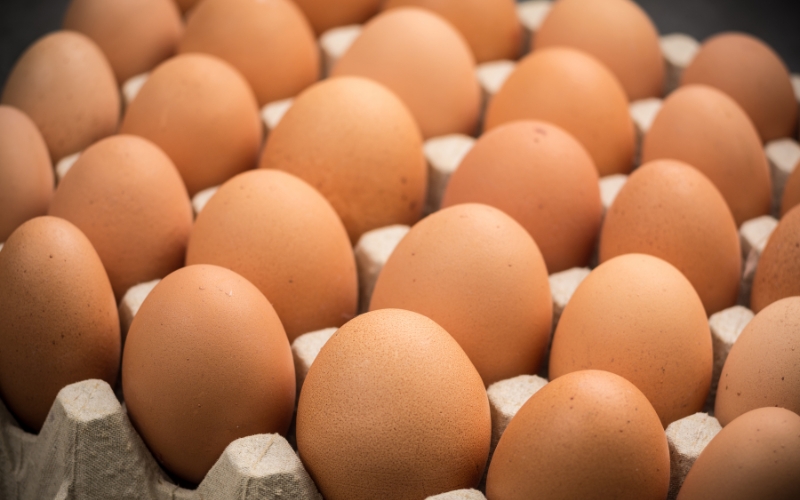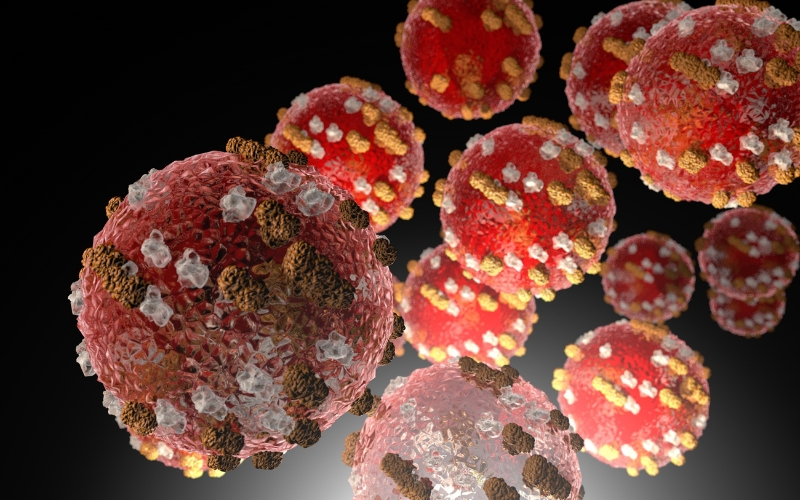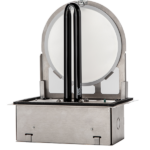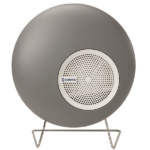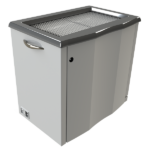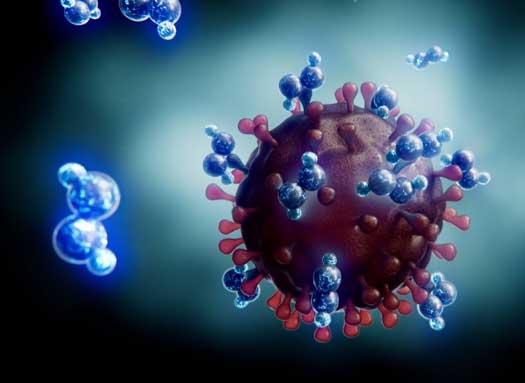Proper mold identification is so important to protect your property. There are so many factors that can lead to mold growth. They range from a small leak to poor ventilation and just about everything in between. As leaders in mold mitigation at Synexis, we want to provide a guide to mold types and the symptoms that may indicate which mold type you have in your home or business.
Mold Types
According to the Centers for Disease Control and Prevention, the most common indoor molds are Stachybotrys Chartarum (commonly known as black mold), Alternaria, Cladosporium (black-colored mold), and Penicillium. Those are the most common. There are many others, including:
- Acremonium
- Aspergillus
- Aureobasidium
- Chaetomium
- Cryptococcus Neoformans
- Fusarium
- Histoplasma Capsulatum
- Mucormycetes
- Serpula
- Trichoderma
- Ulocladium
As mold thrives in warm conditions with high humidity and lots of moisture, the spring is a prime time for mold to develop in indoor conditions.
Mold Types and Symptoms
Stachybotrys Chartarum (Black Mold)
This is both the most common and most toxic mold type out there. You usually find it when you sense a musty odor and it grows in damper areas of a home or business. It’s black and slimy. If you’re looking for potential areas of growth, you can find it near showers, pipes, or just generally areas where you’ll find condensation regularly.
Symptoms Linked to Black Mold
Exposure to black mold can cause allergy-like symptoms. You might have a funny nose, congestion, watery eyes, frequent sneezing and/or coughing, an itchy throat, and sinus pressure. Additionally, black mold can cause asthma attacks, sinus infections, fatigue, and even depression. People with respiratory issues or immune system disorders are particularly susceptible, but just about everyone will have some sort of reaction with an exposure.
Alternaria
This mold is mostly found in warmer and dryer climates, which goes against most mold hiding spots. It is dark with almost a fabric-like texture and is one of the most common outdoor molds. It still does grow in damp spots, but also thrives in ductwork and even upholstery.
Symptoms Linked to Alternaria
With exposure to Alternaria, you’re most likely to see allergic reactions similar to those listed above for black mold and it can cause individuals to develop asthma over time.
Cladosporium (Black-Colored Mold)
This is one of the most common outdoor molds, but invades indoor environments as well. Yes, it likes areas with poor ventilation and excessive humidity. It’s often mistaken for black mold because of its similar look, but it actually isn’t nearly as toxic for those who breathe it in, but we still don’t recommend it. It’s generally olive green to a dark brown or even black with a texture that’s almost velvety. It will begin growing on plants and enters the indoors through windows and doors. The colonies may form on wooden surfaces, carpet, ceilings, wallpaper, and more.
Symptoms Linked to Cladosporium
Similar to the others, respiratory issues like coughing, sneezing, itchy eyes, and a runny nose are quite common. Cladosporium can also cause dry skin and a rash, in some cases. This mold is only an issue if you have a direct allergy to it, so not everyone is impacted.
Penicillium
This is the most commonly found fungi in the world and is not generally life-threatening to those who are healthy. That said, those weak or compromised immune systems are at risk if they come in contact with it. It is green or blue and generally looks fuzzy. It grows on rotting foods and fabrics and also on insulation, carpet, and wallpaper. And it spreads fast! And yes, penicillin is made from it.
Symptoms Linked to Penicillium
Exposure can cause sinus infections and the symptoms that go with those, lung inflammation, and other general allergy symptoms.
Acremonium
This mold is most commonly found indoors in areas with persistent moisture. It will begin moist but turn into a powder. It is difficult to identify by color because it can be white/gray, orange, or even pink. Generally found in humidifiers, cooling coils, drain pans, and window sealants, this mold will colonize when there is sufficient moisture.
Symptoms Linked to Acremonium
These symptoms aren’t easy to notice right away, but they can cause immune system diseases and bone marrow infections.
Aspergillus
This group is widespread and found in many different environments around the world. A good chunk of its species are benign, but certain strains can cause some very serious health issues, particularly in those with weak immune systems. It appears in shades of yellow, green, or black and sometimes looks fluffy due to the mass of spores it produces. It can be found most commonly in soil, compost, and decaying vegetation. But you might also see it on food, air conditioners, and damp walls.
Symptoms Linked to Aspergillus
Exposure can lead to allergic reactions, lung infections, and a condition named for the mold itself, aspergillosis. Those who have compromised immune systems or chronic lung diseases are at the highest risk.
Aureobasidium
This is found in damp environments and has some big health implications. It initially appears with a pink or brown color, but it will darken to black as it matures. You’ll find it on wood, wallpaper, painted walls, and window frames, generally in damp conditions.
Symptoms Linked to Aureobasidium
Those exposed may experience allergic reactions, including skin and eye infections. Those with existing respiratory conditions are at the most risk.
Chaetomium
This mold is most often found in water-damaged homes and buildings and requires immediate attention. When you see it, you’ll notice a cotton-like texture and either a white, gray, or brown color to it. It will attach itself to wet drywall, wallpaper, and baseboards, so new building is a target for this mold.
Symptoms Linked to Chaetomium
If you’re exposed to Chaetomium, you might see skin and nail infections and long-term exposure can lead to both neurological and autoimmune symptoms. This mold is no joke.
Cryptococcus Neoformans
This mold thrives in soils around the world and is often associated with bird droppings, particularly from pigeon guano. It can be life-threatening and affects those most with compromised immune systems. It appears creamy to light brown and has a yeast-like texture. Again, it’s most commonly found in soil and particularly in those with pigeon droppings.
Symptoms Linked to Cryptococcus Neoformans
Inhalation can lead to cryptococcal meningitis, which is a very serious infection of the brain and spinal column.
Fusarium
Fusarium damages both humans and crops, particularly cereals, which makes it a significant agricultural concern. It thrives in cooler climates and can spread quickly. By appearance, it’s wooly or cottony and can be shades of pink, red, or purple. It’s commonly found in soil, which means it grows on various plants and crops. Indoors, it’ll generally be found on water-damaged carpet or other wet materials.
Symptoms Linked to Fusarium
Those exposed to fusarium may see skin infections pop up to something more severe like fusariosis. Which can cause fever, pneumonia and more.
Histoplasma Capsulatum
This mold is found in regions with a large population of birds and bats and becomes dangerous when the spores become airborne. It will appear small and tubular in shape and generally will be a shade of brown. You’ll see it mostly in areas with soils rich in bird or bat droppings, particularly in the Midwest along the Ohio and Mississippi River Valleys.
Symptoms Linked to Histoplasma Capsulatum
Histoplasmosis has a wide range. Some will experience mild, flu-like symptoms while others will feel it more in their lungs. And some will see a spread of discomfort to other parts of the body.
Mucormycetes
This group of molds can cause a sever infection called mucormycosis and are often associated with organic matter breakdown. They are trouble for those who are immunocompromised. They’re generally white to grayish in color and appear fluffy or wool-like. Typically, they are found on decaying organic materials like compost piles, soil, and rotting wood.
Symptoms Linked to Mucormycetes
The infection these molds cause can impact your sinuses, brain, lungs, and skin. In addition to danger for people with compromised immune systems, those with diabetes and anyone who has suffered skin trauma is at risk as well.
Serpula
Serpula is most commonly known for causing dry rot in wood. It’s a mold type that compromises integrity of wooden structures and is pretty easy to identify. It’s a bright yellow-orange or red-brown mold with an appearance that is wavy and slightly fuzzy. It can be found in wooden beams, floors, and general wooden structures, especially if there’s a history of moisture issues within them.
Symptoms Linked to Serpula
The reactions aren’t nearly as toxic as other molds, but can trigger some allergic reactions that are common to hay fever. Wood is in danger more than people with serpula.
Trichoderma
This is most commonly found in agricultural settings as it promotes plant growth and health, but some of the species will produce potent mycotoxins. They are white with a green patch or spore mass in the center with varying textures. They’re most commonly found in soils, but will also grow on wood and other surfaces if wet.
Symptoms Linked to Trichoderma
The species that do produce potent mycotoxins can be harmful if they’re ingested, inhaled or touch the skin. The symptoms people might see are allergic reactions, sinus infections, and other general respiratory issues.
Ulocladium
This is often mistaken for other types of mold because of it’s appearance – black or dark gray with a texture that looks like suede. But it is its own entity and thrives in damp conditions. If you see ulocladium, it is often an indication of water issues in homes or buildings. It’ll most commonly be found in kitchens, bathrooms, basements, and other areas prone to high humidity or leaks.
Symptoms Linked to Ulocladium
Exposure can cause respiratory issues, skin rashes, and eye irritation. If you already have a mold allergy, these symptoms may be more severe.
Synexis and Mold
Synexis and its patented Dry Hydrogen Peroxide (DHP®) technology is a proven leader in mitigating mold. You can read all about mold and what Synexis can do to help with the issue by clicking here.
To speak with an IAQ expert from Synexis, fill out this form and we’ll contact you as soon as possible.
And to learn more about Synexis, click here.
Resources:
Mold Identification: A Complete Guide to Types and Removal
Basic Facts about Mold and Dampness
20 Common House Mold Types: Identification & Health Complications



